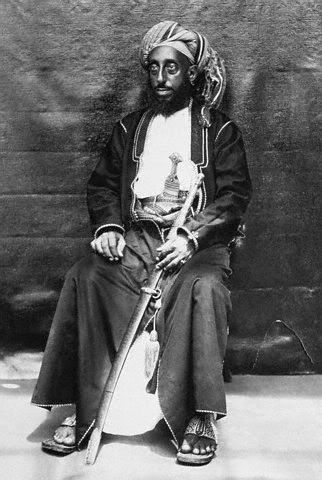
 |
|
|
#1 |
|
Member
Join Date: Apr 2005
Location: dc
Posts: 271
|
This arrived today and I can't believe I was lucky enough to win it.
http://cgi.ebay.com/ws/eBayISAPI.dll...m=220092999460 My camera is on the fritz so I will post better photos later. The whole sword is gorgeous and must have been the weapon of a wealthy man. The silver fitting are very heavy. The blade is beautiful and the silver wire grip is the best thing of all. Everything is tight and fits together well on the sword. The scabbard has some dammage but the blade slides out like silk. I assume it is a european blade because it is so well made. There are a couple of small symbols stamped into each side of the blade, one is a small cross close to the hilt that was buried in rust. The other, I cannot make out. It looks very happy next to my Yemeni swords. http://cgi.ebay.com/ws/eBayISAPI.dll...m=220092999460 |
|
|

|
|
|
#2 |
|
Member
Join Date: Apr 2005
Location: dc
Posts: 271
|
My new Kattara is much like this one on Oriental-Arms. In fact maybe the same maker.
http://www.oriental-arms.co.il/photos.php?id=357 |
|
|

|
|
|
#3 |
|
Member
Join Date: Jul 2005
Location: Tallahassee, FL
Posts: 131
|
I'm glad to see this went to a good home, I was watching this one closely. Such a cool find! I really like how the scabbard was decorated with cord under the leather, to create those spiral shapes. Cheers on a nice sword
|
|
|

|
|
|
#4 |
|
Member
Join Date: Jun 2006
Location: Arabia
Posts: 278
|
Congratulations Mike on such a nice sword!
 I wonder if european trade blades or even military ones had such short fullers on them? Do these exist? Can you please post closer pics of the blade. Cheers! |
|
|

|
|
|
#5 |
|
Member
Join Date: Dec 2004
Posts: 1,712
|
What a lovely sword!
Spiral |
|
|

|
|
|
#6 |
|
Member
Join Date: Dec 2004
Location: Inland Empire, Southern California USA
Posts: 160
|
Great sword. Sorry, I tried to get it myself and drove up the price a bit. You still got a killer deal. I have a nice Omani dagger I'd like to display with an Omani sword some day. Maybe next time one comes up. Congrats on a really super sword. Here is a picture of an Omani man with a dagger just like mine with his sword.
Cheers, Stephen 
|
|
|

|
|
|
#7 |
|
Member
Join Date: Apr 2005
Location: dc
Posts: 271
|
Borrowed camera-not so good-but here are some close-ups.
Thanks, Nagawarrior, I thought it would go higher. |
|
|

|
|
|
#8 |
|
Member
Join Date: Dec 2004
Location: Ann Arbor, MI
Posts: 5,503
|
The one with the curved blade might be caucasian: as per Elgood, in the second part of the 19th century, Daghestanis imported their shashka blades all over and they became very popular in Oman.
I am curious about the new one (straight-bladed): isn't the silver wire a bit too intact? I looked at it and contemplated a bid, but the perfect arrangement of the strands made me apprehensive. They are not even moved, as would be expected from long use. I am not trying to rain on your parade, but just wish to know whether I was too chicken. |
|
|

|
|
|
#9 |
|
Member
Join Date: Apr 2005
Location: dc
Posts: 271
|
That crossed my mind when I bid, but when I received the sword I could tell that the wire wraping had been there since it was made. It's a gut feeling I know, yet one I tust. The silver wire stiching holding the leather to the scabbard is much finer than the hilt yet it is still intact and has the same patina as the hilt. I think that this is more remarkable fact than the condition of the hilt. I believe this is at least a hundred year old piece that was well cared for. If the hilt was rewired at some point, it was done by a master kattara maker. It is increadibly well done.
|
|
|

|
 |
|
|